Calculation of potato seeding rate

The most important thing in planting potatoes – this is compliance with early sowing dates. Meeting the deadlines contributes to the formation of a powerful root system and well-developed tops, which will invariably lead to a high yield.
Well-developed plants are characterized by rapid tuber formation and achievement of full maturity. This is an integral factor in early harvesting with minimal losses that accompany late harvesting.
Content:
- Principles of selection of planting material
- Principles for calculating planting material standards
- Principles for determining planting density
- Principles for determining planting dates
Potatoes like valuable food product, occupies a dominant place among agricultural crops. Not a single table is complete without its presence, as in its own form: baked, boiled, fried potatoes; and as a main and auxiliary component, for the preparation of side dishes, salads and soups.
Principles of selection of planting material

The main principle of planting a crop is the correct calculation of the potato seeding rate. A modern summer resident, equipped with various types of innovative technology, often cannot make the correct calculation of the material required for planting. Thoroughness selection of material for planting consists of several points:
- Using undamaged, smooth and healthy tubers to obtain seed material.
- Sorting of planting material into large, medium and small fractions*.
- Calculation of potato seeding rates.
Note: * when sorting potatoes by size, remember that the amount of planting material is directly proportional to the size of the tuber.
Principles for calculating planting material standards
As an example, let’s calculate the seeding rate of potatoes on one hundred square meters of land or one hundred square meters:
- The size of the rectangular plot is: 12.5m in length and 8m in width;
- the beds are placed in the direction from south to north;
- the plot contains 10 rows; distance between rows - 80 cm; the length of each bed is 125 m;
- when planting, the distance between tubers is 10 cm from each other;
- each tuber should weigh on average 200-300 g and contain at least 5 eyes.
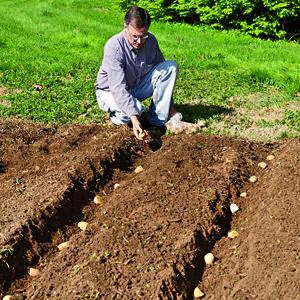
We make calculations:
- row length (125 cm), multiplied by 10 planting rows, you get 1250 pieces;
- 1250 pcs. need to be divided into 5 eyes, as a result we get 250 tubers.
Conclusion: for one hundred square meters of land, the norm for sowing potatoes is 250 tubers.
Calculations of potato seeding rates for large sown areas are carried out in a similar way. To calculate the planned yield, the number of seed tubers planted on an area of 1 hectare is multiplied by the average weight of potatoes.
Example: The average weight of a planting tuber is approximately 60 g or 0.06 kg. 65 thousand tubers are sown per hectare of area. The planned yield per 1 hectare will be: 65,000 x 0.06 = 3.9 tons per hectare.
To calculate optimal norms and the amount of expected harvest, many farmers use special summary tables. The tables are compiled by agricultural services. They calculate not only norms and planned yield depending on the varieties planted, but forecasts of the market value of the finished crop relative to the cost of seed material have also been made.
Principles for determining planting density
When plants planted in a certain area receive sufficient moisture and nutrition, form a powerful root system and leaf cover, and fully utilize solar energy, then this is called the optimal planting density.
When planting potatoes, soil fertility is taken into account. The higher the fertility index, the more potato tubers can be planted on the site. Consequently, due to additional plantings of potato crops, it is possible to obtain a larger yield.
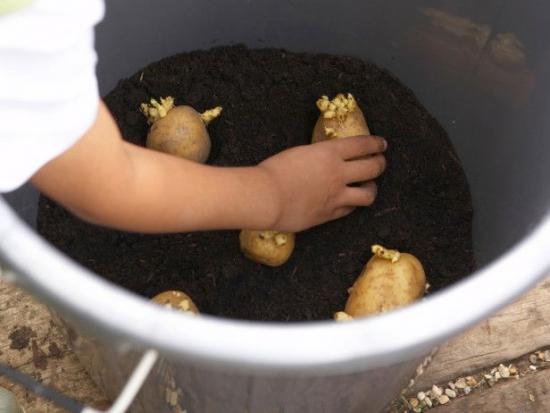
There are standards for optimal planting density per hectare, depending on the region:
- Northern and Northwestern regions - from 50 to 55 thousand bushes;
- Central and Southern regions - depending on the soil conditions: on sandy loam and sandy soils there are about 45 thousand bushes, on loamy soils up to 55 thousand bushes.
Principles for determining planting dates
Germination of potato tubers begins at soil temperature at a depth 10 cm, total +3+5С. The process enters the active phase at the optimal soil temperature of +6+8C. This temperature in spring is reached within a week.
With early planting, it is possible to increase potato yields by up to 30% compared to late planting.
As a conclusion:
- It is very important to determine the start time of planting potato crops and the varietal order of sowing.
- When cultivating potatoes using the mechanized method, both the optimal temperature and the arable ripeness of the soil are taken into account.
- Early-ripening, mid-early and mid-ripening varieties are planted first. It is advisable to plant with sprouted tubers.
- Varietal potatoes for industrial purposes are planted last.


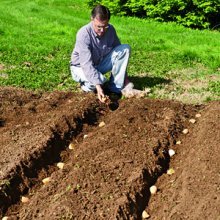



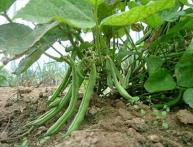
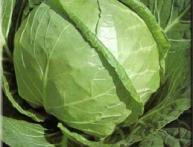



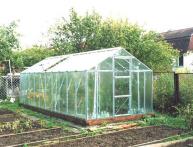
Comments
It seems to me that in practice few gardeners engage in such calculations. Most of them have considerable experience behind them, allowing them to determine the amount of potatoes required for planting without them.
We plant potatoes with a tuber weight of 200-300 gm.???
"For example: the weight of a planting tuber is approximately 60 g. The number of tubers for planting per 1 hectare is 65,000 pieces. Planned yield: 0.06 x 65,000 = 3.9 tons per hectare." People think about what you write!!! We calculate the planting rate, and in the end we get the planned yield!!!
Thank you! The information was very helpful!)